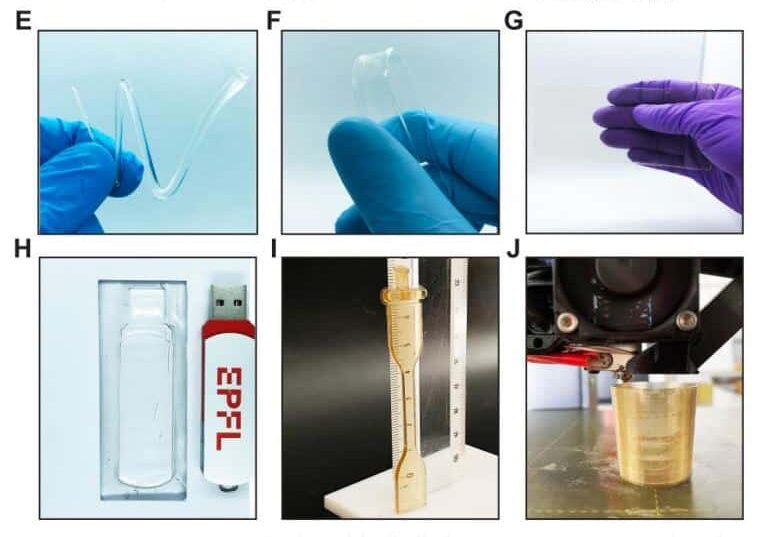Plastic pollution has become one of the most pressing environmental concerns but scientists discovered a new alternative – PET-like recyclable plastics made from plants.
A lot of studies are shedding light on the impact of plastics on human health and marine ecosystems. But discussions around plastics’ impact on climate change have been scarce so far.
The recent COP27 high level event changes that, bringing more awareness to plastic pollution and its contribution to global warming.
A 2050 net zero emissions scenario requires plastic alternatives that are biodegradable, affordable, scalable, and have lower energy use and carbon footprint.
Researchers have created a plastic from biomass with PET-like properties and meets the criteria as an eco-friendly alternative to the existing plastics.
Plastics and Their Carbon Footprint
Plastics are made from fossil fuel and produce greenhouse gases throughout their lifecycle. They are also projected to represent 20% of oil consumption and 15% of the global annual carbon budget by 2050.
- Single-use plastics, in particular, have a high carbon footprint and loss of energy resources as they’re discarded after only a short, one-time use.
Unfortunately, only 9% of plastic has ever been recycled. And according to the International Union for Conservation of Nature (IUCN), at least 14 million tons of plastic go to the ocean every year. Without action, plastic in the oceans could triple by 2040.
Thus, new materials made from other sources than oil are emerging to address emissions across segments in the plastics industry. Bioplastics or biopolymers are from natural, biological sources. Both alternatives are meeting the demand for plastic substitutes.
But one critical factor that’s often overlooked when it comes to plastic alternatives is their carbon footprint. And so, scientists and companies around the world are finding ways how to address this.
Carbon capture and utilization (CCU) companies are developing technologies to make plastics from carbon emissions.
For instance, the US-based company LanzaTech is using microbes to convert captured carbon into polymer precursors like ethanol. This is part of their ESG strategy to make business operations become sustainable.
Meanwhile, some scientists are working on degradable or recyclable polymers made from non-edible plant material called “lignocellulosic biomass”. However, the research surrounding this natural plastic source is complex.
Plastics Made From Plants
But teams of scientists from Switzerland and Austria, led by Jeremy Luterbacher at Federal Institute of Technology Lausanne or EPFL and the University of Natural Resources and Life Sciences in Vienna believe they offer an ideal solution.
They have created a new PET-like recyclable plastics that can be easily made from the non-edible parts of plants. This plastic alternative offers a promising tough and heat-resistant plastic ideal for food packaging.
Here’s a quick overview about this new discovery.
Jeremy Luterbacher noted:
“We essentially just ‘cook’ wood or other non-edible plant material, such as agricultural wastes, in inexpensive chemicals to produce the plastic precursor in one step… By keeping the sugar structure intact within the molecular structure of the plastic, the chemistry is much simpler than current alternatives.”
Such a technique is after Luterbacher’s and his colleagues’ discovery in a previous study in 2016. The team discovered that adding an aldehyde, an organic compound, stabilized certain parts of plant material and prevented their destruction.
The scientists use a different aldehyde – glyoxylic acid instead of formaldehyde. This chemical allows the sugar molecules from biomass waste to act as plastic building blocks.
- Using that technique, the team was able to convert about 25% of the weight of plant waste (95% of purified sugar) into plastic.
The new plastic material can have various uses, the researchers said. It works for packaging, making textiles, and creating electronics and medicinal items.
In fact, the team has made some of them already as shown in the picture below. E.g. packaging films (H), fibers for clothing and other textiles (E), and filaments for 3D-printing (G, J).
Luterbacher says that the plastic has very exciting properties, making it great for food packaging. He also added that:
“And what makes the plastic unique is the presence of the intact sugar structure. This makes it incredibly easy to make because you don’t have to modify what nature gives you, and simple to degrade because it can go back to a molecule that is already abundant in nature.”
If businesses opted to use the plastics from plants for packaging or other purposes, they may enjoy a potential revenue stream from carbon credits. They can earn the corresponding credits from the amount of carbon saved from not using fossil fuel.



